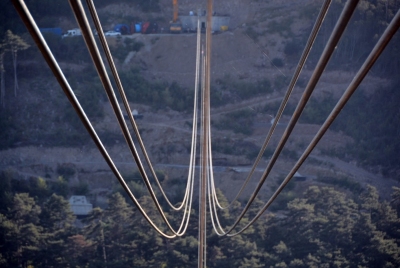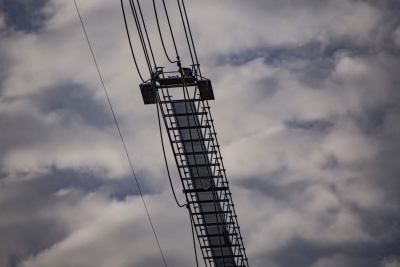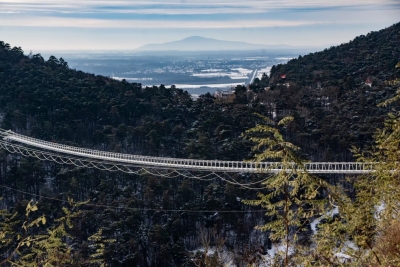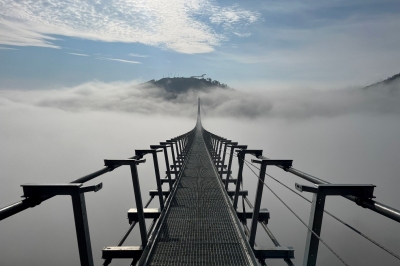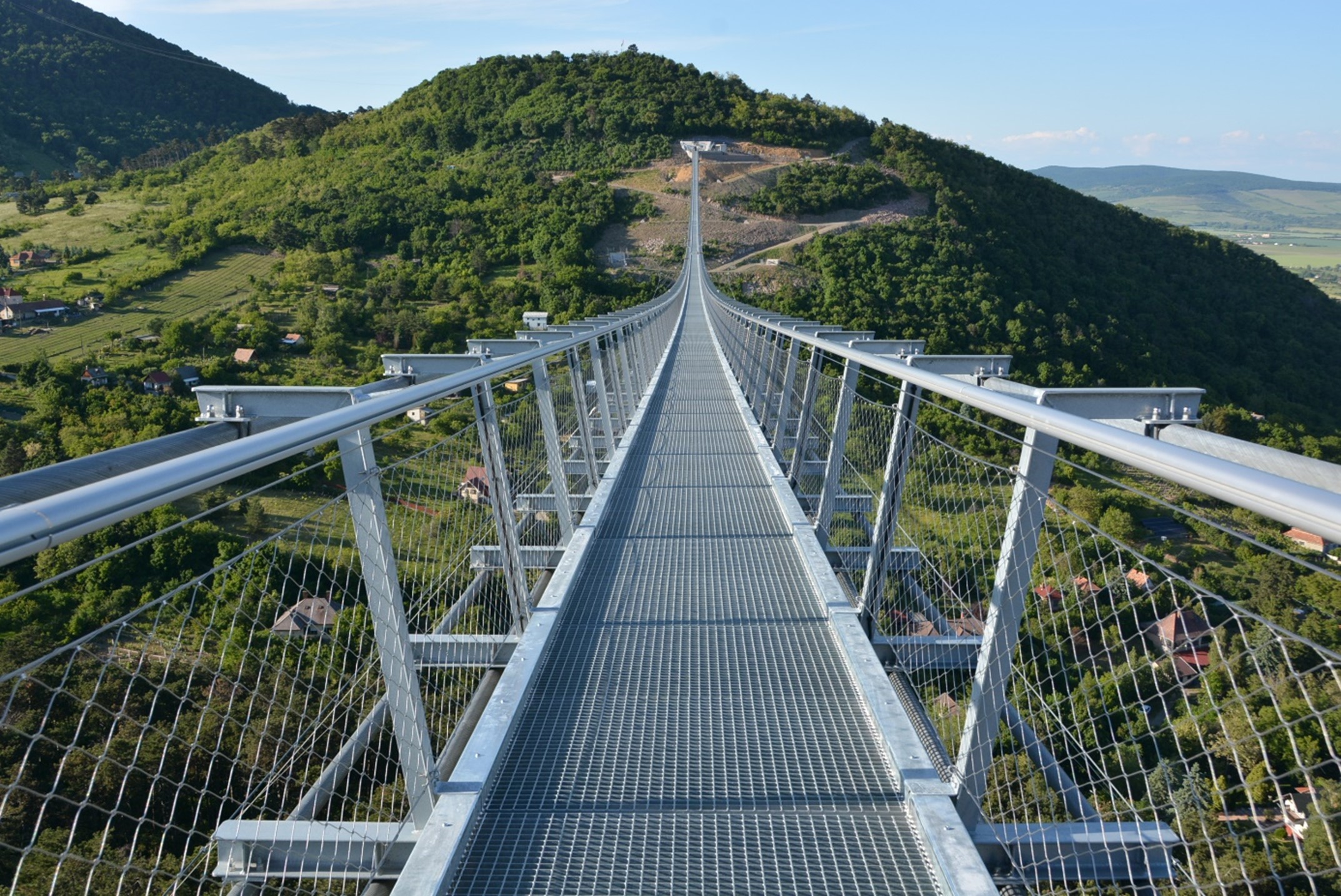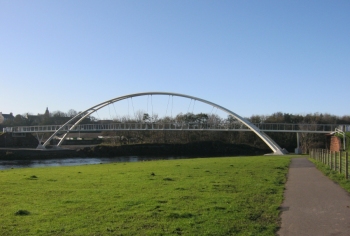 Case
Study Case
Study
Zemplen 723 footbridge
- World record-breaking
pedestrian catenary bridge
- Detailed geometrical nonlinear
staged construction analysis
- Analyis accuracy proven by
on-site measurements during and after construction
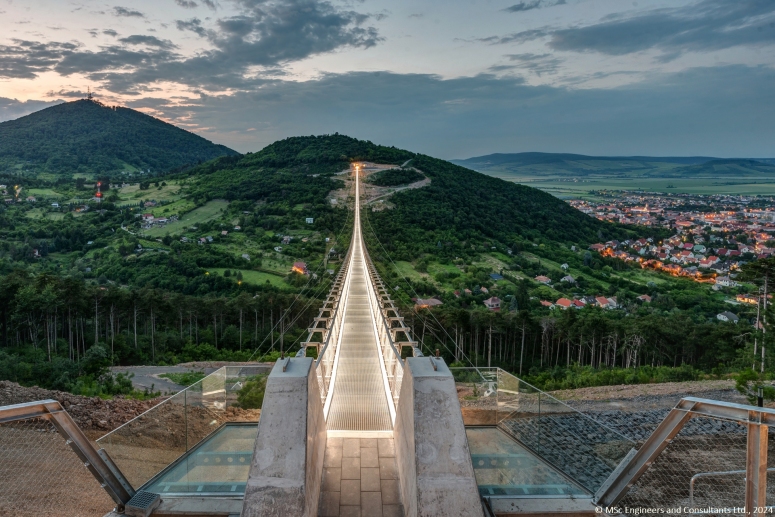
MSc
Engineers and Consultants Ltd. used LUSAS Bridge analysis
software to assist with its design of a world record breaking
pedestrian catenary bridge on behalf of its client the Municipality of
Sátoraljaújhely.
The bridge is a new attraction for the Zemplen Adventure Park, and
spans 700m between two hillsides of the Zemplen Mountains, in Sátoraljaújhely, Hungary.
On completion in June 2024, it became the longest span bridge of its kind
in the world. Its total length (including the abutments with glass balconies) is
723.7m, giving the bridge its name of Zemplen 723.
Bridge description
Zemplen 723 is a catenary bridge, meaning that compared to classic suspension bridges it has no pylons and hangers so the elevation of the pedestrian deck follows the parabolic shape of the 6 main cables.
At its midsection, where there is a glass floor, the 1.2m wide two-way walkway sits approximately
84m above the valley floor. The bridge is stiffened by a wind cable system
consisting of two primary wind guy cables and secondary wind tie cables. The two main
wind guy cables run in a parabolic shape in a tilted plane towards the bridge.
Additional fixed anchor cables are provided at the starting sections of the bridge. The large tensile forces
of around 3300kN in each of the 6 main cables are carried by steel structures integrated into the
reinforced concrete abutments. The overall static equilibrium is ensured by 23m
long strand anchors embedded into the dacite rock. The construction required 149
tonnes (6490m) of steel cable and an additional 96 tonnes of structural steel. The substructures (abutments and wind cable substructures) consist of 1700m3
of reinforced concrete.

General
arrangement
(click for higher resolution image)
Modelling with LUSAS
The bridge design required a geometrical nonlinear staged construction
analysis in order to take into account the large displacement and the exact force development of the cables.
Because of its capabilities for this type of analysis a LUSAS finite element model was
built using bar elements to
represent the cables and beam elements to model the supporting frame elements of the bridge deck.
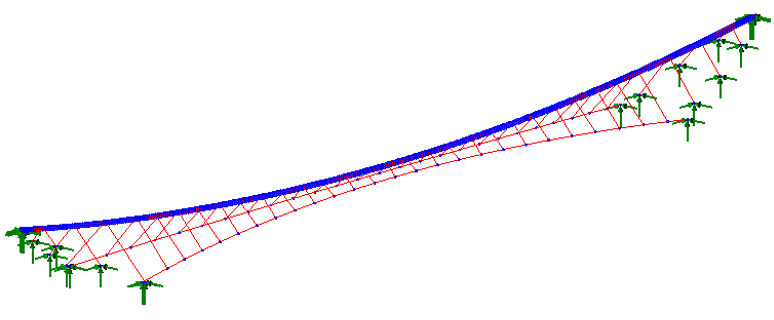
|
The final geometry of the wind cable system was determined by parametric analysis. The form finding procedure was carried out by a script which was written with the help of LUSAS’s step recording feature.
As part of the design procedure a thorough physical wind analysis was also carried out. The eigenmodes and eigenfrequencies,
required as initial data for the wind analysis, were obtained from the global LUSAS model results.
|
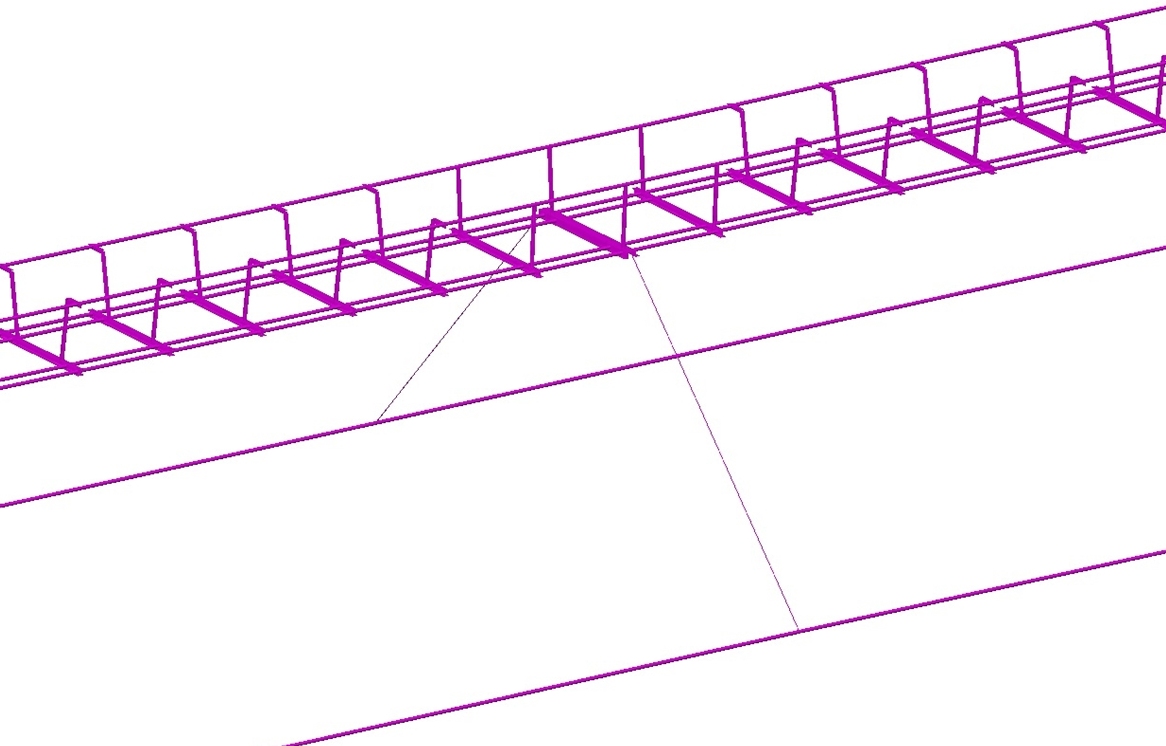
Detail showing
wind cables
|
|
|
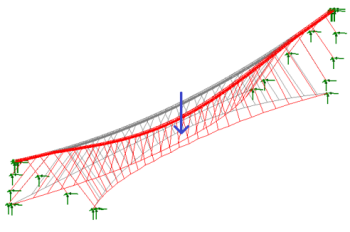 |
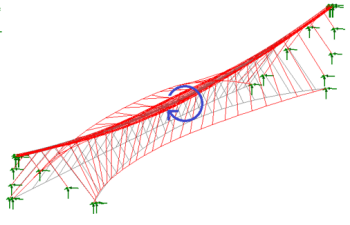 |
| First
vertical eigenmode
|
First
torsional eigenmode |
In addition to verifiying the structural elements,
the staged construction process involving the erection of the main cables and
wind
cables was also designed, checked and controlled step-by-step with
LUSAS with the help of the global model and with secondary cable models.
|
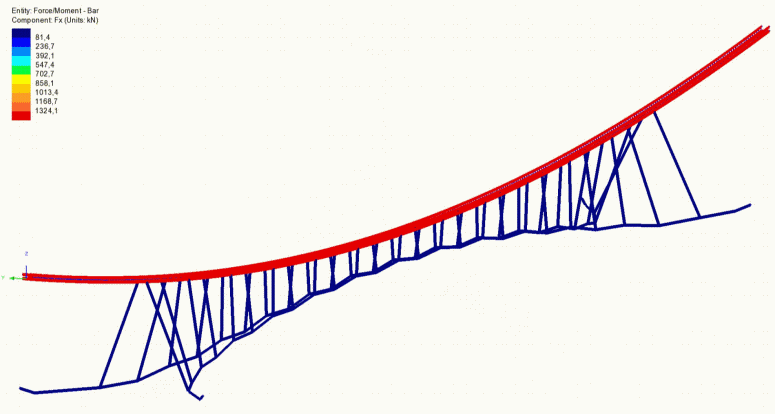
|
|
Animation
showing tensioning of the wind cable system (side, end and
plan views) |
The accuracy of the LUSAS analysis was
proven both during the bridge's construction, during which the main stages were monitored by height and/or force
measurements, and also on its completion by carrying out a static and dynamic load test prior to
opening. The calculated and measured results were in very good agreement.
Access to the bridge
is controlled with no more than 300
pedestrians permitted to use the bridge at the same time - this limit being determined by comfort considerations and not by static capacity
reasons.
Peter Gondar, Senior
Engineer at MSc Engineers and Consultants Ltd. said "This was
one of the most challenging projects in the history of our firm
thanks to the numerous engineering problems that the design of such
a unique bridge hides. The entire design process was highly driven
by the calculations, meaning that not only the general structural
safety but also the geometry, the buildability and the final
serviceability of the bridge depended on the accuracy of the cable
forces."
Construction
images
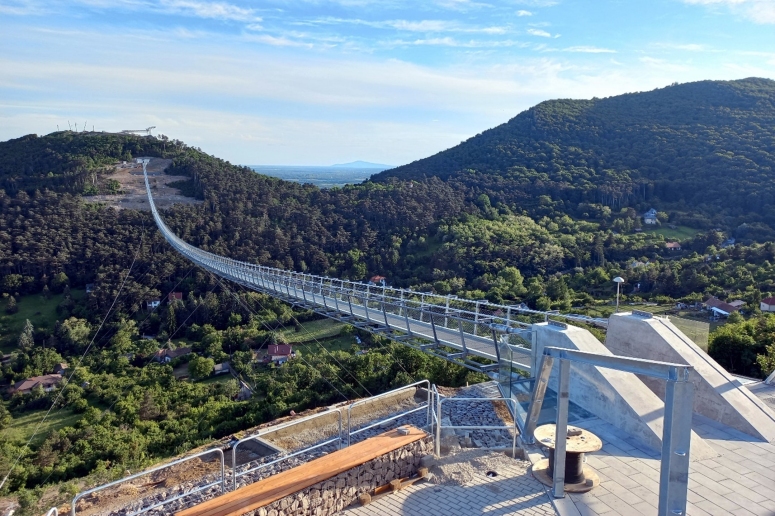
"Thanks to the geometrical
nonlinear and staged construction capabilities of LUSAS we managed
to solve the global structural and construction analysis with high
level of precision and fulfill the client’s expectations in all
respects."
Peter Gondar, Senior
Engineer, MSc Engineers and Consultants Ltd., Hungary
Main participants:
-
Client: Municipality of Sátoraljaújhely
-
Contractor: Graboplan-Industrie Ltd.
-
Bridge designer: MSc Engineers and Consultants Ltd.
Find out more
Other LUSAS Bridge case studies:
|
 Case
Study
Case
Study






